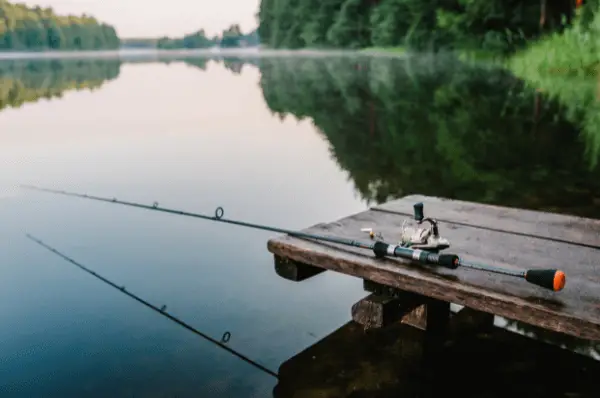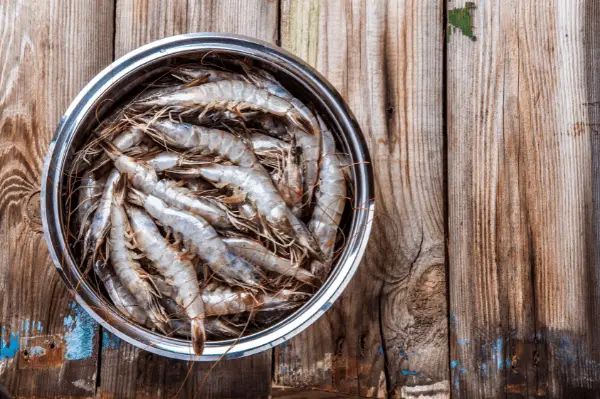
Pier Fishing is convenient for those who want to fish in deeper waters without a boat. Piers extend into the water, allowing anglers to access areas where different types of fish gather. The various parts of the pier offer diverse fishing experiences, attracting a wide variety of fish species. Piers are popular spots for angling as they provide food and shelter in the open water around them.
Additionally, pier fishing is well-suited for people with physical limitations or beginners interested in exploring the sport. Whether you’re new to fishing or an experienced angler, mastering pier fishing can improve your success and enjoyment.
What is Pier Fishing?
Many fishing enthusiasts enjoy pier fishing, as it offers a convenient and stable way to enjoy the sport without the challenges of boat fishing. Whether casting off a bustling pier or finding solitude on a quiet jetty, the thrill of catching a fish surrounded by the sea is undeniable.
Pier fishing also provides opportunities to connect with local communities and fellow anglers, fostering camaraderie and a shared love for the ocean. It allows for up-close marine life observation and often provides amenities like cleaning stations and nearby tackle shops, making it accessible to experienced anglers and beginners.

Health Benefits of Pier Fishing
Engaging in pier fishing offers more than just the joy of catching fish. It provides numerous health benefits that can improve your overall well-being. Not only does it allow you to relax and relieve stress, but it also encourages physical activity through the repetitive actions of casting and reeling in your catch.
Additionally, spending time outdoors on a pier exposes you to fresh air and sunlight, which is crucial for maintaining good health. These elements combined contribute to a sense of relaxation and overall wellness.
Moreover, focusing on something other than daily stressors while waiting for a bite can be mentally refreshing and promote mindfulness. Collectively, these aspects make pier fishing a fun pastime and an effective way to enhance your physical and mental health.

Choosing the Right Pier
When selecting a pier for fishing, it’s important to consider a few key factors. Start by choosing a pier known for its diverse fish population and offering enough space for casting. Avoid crowded piers, as they can make fishing more difficult and less fun. Also, look for nearby amenities like cleaning stations, restrooms, and bait shops to enhance your fishing experience.
Additionally, understand the local regulations and obtain necessary permits before fishing at a specific pier. This will help you avoid legal complications while enjoying the water.
Moreover, picking the best pier for your fishing trip can make a huge difference in how enjoyable it is. Considering the types of fish available, facilities, and local rules will help you have a successful and satisfying day of fishing at your chosen spot. So, do your homework before you set off – it’ll lead to more fish and fewer problems.

Essential Gear and Tackle
Effective pier fishing depends heavily on having the appropriate equipment and gear. The right rod and reel combo, capable of withstanding the challenges of saltwater fishing, is essential for a successful outing. Look for a medium-heavy or heavy-action rod paired with a dependable reel that can handle larger fish commonly found near piers. Additionally, it’s crucial to have a durable tackle box stocked with hooks, sinkers, swivels, and lures to maximize your chances of attracting various species.

Furthermore, when preparing for pier fishing, it’s important to consider adding specialized equipment to your traditional gear. Items like a pier gaff for landing larger catches or a cast net for catching live bait can be valuable tools when targeting bigger game fish at the pier. Additionally, investing in polarized sunglasses serves a dual purpose of protecting your eyes and helping you spot fish in the water more easily, giving you an advantage when casting your line.
In addition, with advancing technology, there are also innovative electronic gadgets specifically designed for pier fishing, such as portable fish finders that can help locate schools of fish beneath the surface. Prioritizing essential gear and tackle increases your chances of success and contributes to an overall enjoyable fishing experience on the pier.

Best Bait and Lures to Use
When engaging in pier fishing, the selection of bait and lures can significantly impact the outcome of your fishing trip. Live shrimp is a highly effective bait for pier fishing, attracting diverse fish species, including snapper and flounder. It can be easily utilized with a simple popping cork rig or free-lined with minimal weight.
Alternatively, anglers who prefer artificial lures may find soft plastic swimbaits an excellent choice for pier fishing. These lures closely resemble the movement and appearance of baitfish, making them enticing to predatory fish such as trout, redfish, and tarpon. Utilizing jig heads in combination with swimbaits enables precise casting around pier structures, increasing the likelihood of enticing a bite from nearby fish.
Furthermore, aside from live shrimp and soft plastic swimbaits, cutting bait like mullet or squid can be extremely successful in luring bigger predatory fish such as sharks or king mackerel while pier fishing. These baits emit potent odors that can permeate the water, enticing inquisitive or hungry fish from a distance.

Techniques for Pier Fishing Success
Angling from a pier provides a special chance to catch a wide variety of fish, but it takes skill and strategy to succeed. One useful tactic is to change how you present your bait. Experiment with different depths and weights to figure out what attracts the fish. Keep an eye on the tides, too, as they can make a big difference in how many fish you catch. Fishing during the incoming tide is usually better because it brings in fresh water and nutrients that draw in the fish.
When pier fishing, it’s important to consider the weather and how it affects the water. Adapting your strategy based on wind direction, temperature, and cloud cover can increase your chances of catching good fish. Also, don’t overlook the value of observing where other anglers are successful and figuring out how you can adjust their methods to fit your style. Combining these tactics will improve your pier fishing experience and catch more fish on every trip.
Safety Tips for Pier Anglers
When fishing from a pier, it’s important to remember that safety should be the top priority. Being mindful of your surroundings is crucial, especially when the pier is busy with other anglers and pedestrians. Always stay alert and avoid obstructing others. And don’t forget to keep a safe distance from the pier’s edge to prevent accidents.
Pier anglers must prioritize safety by being well-equipped with essential safety gear, such as a first aid kit for minor injuries, and ensuring their fishing equipment is in good condition. Additionally, keeping a watchful eye on the weather and being ready to seek shelter during unexpected changes in the environment is crucial. By staying alert and prepared, pier anglers can guarantee a safe and pleasant fishing outing.
Moreover, keeping these safety guidelines in mind when fishing on the pier will boost your safety and help create a better fishing atmosphere for everyone. By staying aware and taking proactive steps, anglers on the pier can fully enjoy fishing without risking their safety.
Common Species Caught During Pier Fishing
Anglers fishing from piers can reel in a wide variety of fish, such as snook, redfish, trout, flounder, and panfish. The mix of species available may change based on the time of year and where you are, making angling on a pier an exhilarating experience.

Understanding Local Regulations and Etiquette
It’s essential to grasp the local rules and customs for pier angling. Each pier may have its regulations, like specific fishing times, allowed bait, and catch size limits. Anglers should understand these rules to steer clear of legal problems and clashes with fellow anglers.
Moreover, showing consideration for others is crucial when fishing on a pier. This means respecting other anglers’ space, keeping the area tidy by disposing of waste correctly, and adhering to safety measures for pleasant angling from the pier experience.
In addition, it’s beneficial to connect with local authorities or seasoned anglers to gain valuable knowledge about a particular pier’s specific guidelines and traditions. Delving into the reasons behind these rules can also cultivate greater respect for conservation efforts and responsible fishing methods. By following local rules and customs, anglers preserve marine life and foster positive relationships within the pier fishing community.
Conclusion
Pier fishing offers a unique and accessible way to explore deeper waters without needing a boat. The ability to catch various types of fish without contending with big waves provides a convenient and enjoyable alternative to traditional shore fishing. Extending piers into the water allows anglers to access deep areas where fish congregate, providing ample opportunities for successful catches.
Furthermore, the diverse locations along the pier offer the chance to target different fish species, adding an element of versatility to this form of angling. Whether you’re an experienced angler or new to fishing, pier fishing presents an excellent opportunity to enjoy the sport in a novel and rewarding way.
FAQs
Q. What gear do I need for pier fishing?
A. Basic gear includes a fishing rod, reel, tackle box, bait, and net.
Q. Do I need a fishing license for pier fishing?
A. It depends on location, so check local regulations to ensure compliance.
Q. Can I fish from any pier?
A. Not all piers allow fishing, so look for designated fishing piers in your area.
Q. What types of fish can I catch from a pier?
A. You can target various species, including mackerel, snapper, trout, flounder, panfish, and more.
Q. How deep are the waters around the piers?
A. Depths vary by location but can range from shallow to over 20 feet deep in some areas.


Leave a Reply